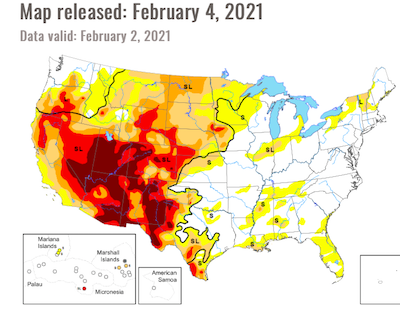USDA’s WASDE Report Revealed Shock Factors for the Cattle Market
Don Close - USDA Feb Report Cattle Recap
The USDA February WASDE report released Tuesday revealed expectations for higher beef production this year, a projection the agency says is driven by beefed up cattle slaughter and heavier weights. One protein analyst thinks the revisions could be something that could impact prices in the months ahead.
“Part of the deal with the less than expected decline in total cow and total cattle numbers is that the level of heifer retention we had in the beef space surprised me,” says Don Close, senior protein analyst for Rabo AgriFinance. “Also, as an offset to any decline in beef cow numbers, when you had 1.5% increase in dairy cow numbers, when you have that kind of increase in dairy cow numbers, the offspring of those dairy cows now come into the beef supply chain.”
Close says the biggest surprise wasn’t just what the report showed, but what it didn’t show in terms of cow liquidation.
“My initial reaction to the report was somewhat disappointing, with the fact we did not see the level of liquidation that so many were looking for,” says Close.
He says while the USDA didn’t make as many adjustments to the 2021 numbers as he was looking for, it did make adjustments to its 2020 numbers.
“The other takeaway was given the reduction, or all of the revisions, in the 2020 numbers and trying to figure out what that means,” says Close. “But at the end of the day, we just did not see the level of reduction that the market was anticipating.”

Another shock factor was the number of cows the in key cattle producing states, despite dryness impacting many of those areas in the Southern Plains.
“We actually had an increase in in beef cow numbers in Texas, Oklahoma and Kansas, and given a lot of the dry weather concerns we had through 2020, on and off, and then the risk we have with the expansion of the drought in the west and moving across the central or southern states for 2021, I just have a little bit of uneasiness that the expansion in female numbers may be a bit vulnerable if we do get into real weather complications this summer,” he says.
He still thinks the best pricing opportunities will come for cattle producers in the second half of the year, but says that with caution, considering feed costs continue to climb.
“I don’t want to take away from the fact that yes, I think it's going to be better [than 2020],” says Close. “I just don't want to get caught in the trap of over selling to producers how wonderful it's going to be because it's still going to be a pretty good challenge.”







